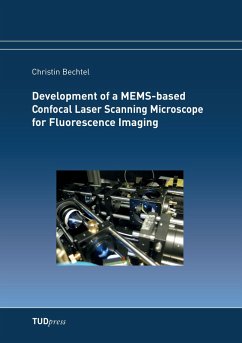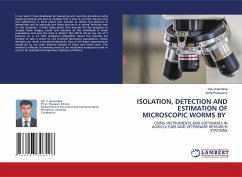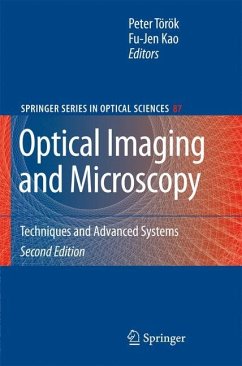
Development of a MEMS-based Confocal Laser Scanning Microscope for Fluorescence Imaging
Versandkostenfrei!
Versandfertig in 1-2 Wochen
32,99 €
inkl. MwSt.

PAYBACK Punkte
0 °P sammeln!
Although fluorescence confocal laser scanning microscopy is a widely used technique in biology, these microscopes are at present uncommon in medical diagnostics. However laser scanning fluorescence microscopy has shown to be a promising non-invasive imaging tool in dermatology by allowing the evaluation of dynamic skin processes. Factors which have impeded the establishment of this technology so far are small fields of view and high costs.The main objective of this dissertation has been to investigate and operationally verify a new approach, that of integrating a MEMS mirror for laser scanning...
Although fluorescence confocal laser scanning microscopy is a widely used technique in biology, these microscopes are at present uncommon in medical diagnostics. However laser scanning fluorescence microscopy has shown to be a promising non-invasive imaging tool in dermatology by allowing the evaluation of dynamic skin processes. Factors which have impeded the establishment of this technology so far are small fields of view and high costs.The main objective of this dissertation has been to investigate and operationally verify a new approach, that of integrating a MEMS mirror for laser scanning. With the design and realization of a first compact fluorescence laser-scanning microscope, which offers a field of view larger than that of currently available endoscopes, prove of principle is given. The adequate resolution and optical sectioning capability is illustrated with histological and biological samples and a quantitative optical performance evaluation is presented.In the second part of this work the optimization and transformation of the initial design into a handheld version with enlarged field of view is investigated. It is shown that this goal can be achieved by re-designing of the optical imaging system including custom-designed lenses. Based on simulations, a handheld version with a more than twice as large field of view is possible. In conclusion, this MEMS-based approach is a highly promising solution by virtue of its ability to provide a large field of view while allowing a compact layout.












